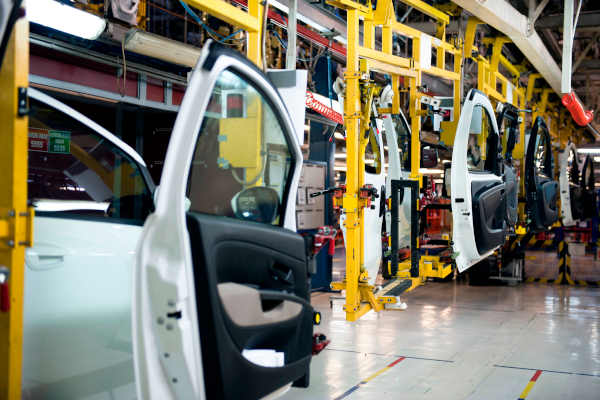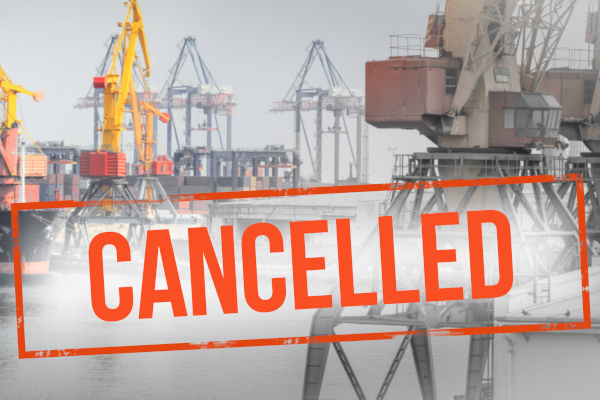Keep a Look Out for These Disruptions to the Automotive Supply Chain in 2024
Red Sea danger, labor, the border crisis and an election keep automakers, and suppliers on their toes
On Jan. 12, the current crisis in the Red Sea claimed its first real supply chain victims. Automakers Tesla and Volvo announced they were suspending production at some facilities in Europe due to a component shortage. The problem? Those components come plants in Asia and travel is typically on ocean shipping containers through the Suez Canal.
“The armed conflicts in the Red Sea and the associated shifts in transport routes between Europe and Asia via the Cape of Good Hope are having an impact on production in Gruenheide,” a Tesla spokesperson said, as reported by Reuters.
This disruption is the latest in a series of disruptions that continue to offer speedbumps to the global automotive supply chain. And we may not be done with semiconductors yet, either.
“The good thing right now is we have exited COVID and gotten through 2023,” explains Brian Fairchild, senior director of sales and sales operations with global consulting firm Seraph. “We are seeing a lot of leveling out and getting back to normal. Normal is we have a disruption here or there with supplier A, B or C … instead of drinking out of a fire hose. We are able to manage these situations better.”
Fairchild spoke with Supply Chain Management Review on the state of the automotive supply chain prior to the announcement of Tesla and Volvo’s plant closures. But, those disruptions should be temporary as the companies await components already en route.
Labor union push
To Fairchild, there are a number of other potential disruptions looming, starting with labor. While the United Auto Workers have reached labor agreements with the major automakers, there continues to be rumblings the UAW is looking to extend its influence.
Noting that the UAW has traditionally been associated with the Detroit Big 3, Fairchild says that is changing, and automakers are responding. He said Honda recently handed out raises in an effort to help mitigate the risk of the UAW coming in to plants.
“The good thing right now is we have exited COVID and gotten through 2023. We are seeing a lot of leveling out and getting back to normal. Normal is we have a disruption here or there with supplier A, B or C … instead of drinking out of a fire hose. We are able to manage these situations better.”
“The UAW is starting to branch out so how is that going to affect the suppliers out there?” Fairchild asks. “If wages are going up, are suppliers going to [be able to get price increases]?
“[The UAW] wants to target Tier 1s and other manufacturing to go out there and protect American workers,” he adds. “Companies are somewhat nervous about that – obviously we need to protect the workers but that will come with a cost.”
While not naming specific companies, Fairchild says there are firms getting ready to vote on union representation. “This year will show a lot about what angle the UAW will be taking,” he says.
Border concerns
The border is also an issue. Trade between the U.S. and Mexico was $779.3 billion in 2022, with automotive accounting for a significant portion of that - $120 billion in 2017. The Mexican auto industry produces more than 3 million vehicles per year, with 90% of those exported and 76% of those coming to the U.S. With immigration expected to be a major election issue in the U.S., Fairchild says automakers need to pay attention.
And it’s not just the election that is impacting trade. Closer border scrutiny is slowing customs checks, he adds.
“Components coming into the country being more thoroughly being checked so that is slowing the speed of getting components,” Fairchild notes. “Companies are having to rebalance inventories … that is a delicate balance because you can’t hold too much inventory.”
Of course, China and nearshoring both remain significant unknowns. The push to diversify supply chains is pushing more sourcing into Mexico and other Asian countries, but that also comes with uncertainty.
“There’s all this business going to Mexico, but it’s a little overwhelming,” Fairchild says. “Are they going to be able to keep up with [demand, costs, etc.]?”
Casting your vote
The political environment, not just in the U.S. but elsewhere, is also creating new challenges.
“There are always concerns with Mexico. We classify that as white swans … we all know there are concerns with building in Mexico and keeping products moving through, but how does that dynamic get addressed, and depending on the political party, they have their own ideas,” Fairchild says. “We do see a lot of Chinese companies coming to Mexico. It’s the never ending cat-and-mouse game with manufacturing. A hurdle comes up and you just have to find a way around it.”
Tied with the political climate is the continued emphasis on ethical sourcing and ESG initiatives.
“One of the things automotive makers have done recently is they have updated their terms of conditions. They have updated them to address ESG requirements,” Fairchild says. “It’s not necessarily a surprise because a lot of companies have their own guidelines, but it states very clearly that you should not have materials coming from conflict areas or forced labor or child labor. Now companies need to shift to think about that.”
Final thoughts
Fairchild says a couple of issues will hover over the automotive supply chain – geopolitical concerns and electric vehicle investments.
On the second point, he notes that most major automakers had made aggressive pushes to announce a transition to an EV future, but that came with big investments. Now that demand is softening, the question is what happens to those investments.
“It’s very dynamic, to say the least,” he says. “There is still the impact of labor costs, process costs, and process efficiencies now that we are trying to do [EV] volume. If you think about electric vehicles, demand is there but the infrastructure is not, and we think that lack of infrastructure is starting to hurt demand. That has a really big impact because a lot of companies have invested a lot on investments and if [sales] don’t come, that means companies are left paying off those investments. What kind of financial burden is that going to be going forward?”
Geopolitical concerns may influence nearly all aspects of all supply chains for the foreseeable future. And the automotive supply chain is no different.
“The good thing is, in my optimistic view, the past couple of years have shown the durability and resiliency of the supply chain. Managers have found ways to manage black swan events,” Fairchild says. “Now it comes to keeping people, keeping those processes, managing inventory to avoid disruptions but not holding too much that might go to waste if there is an engineering change.”
Article Topics
Seraph News & Resources
Keep a Look Out for These Disruptions to the Automotive Supply Chain in 2024Latest in Supply Chain
Trucking Industry Pushes Back on Government’s Electric Mandates Senators Take Aim at Amazon with Warehouse Worker Protection Act Maersk Sees Silver Lining in Red Sea Shipping Challenges Happy Returns Partners With Shein and Forever 21 to Simplify Returns Baltimore Opens 45-Foot Deep Channel Following Bridge Collapse El Paso Border Delays Cost Juarez $32 Million Per Day in Economic Losses Ranking the World’s 10 Biggest Supply Chains More Supply ChainAbout the Author












